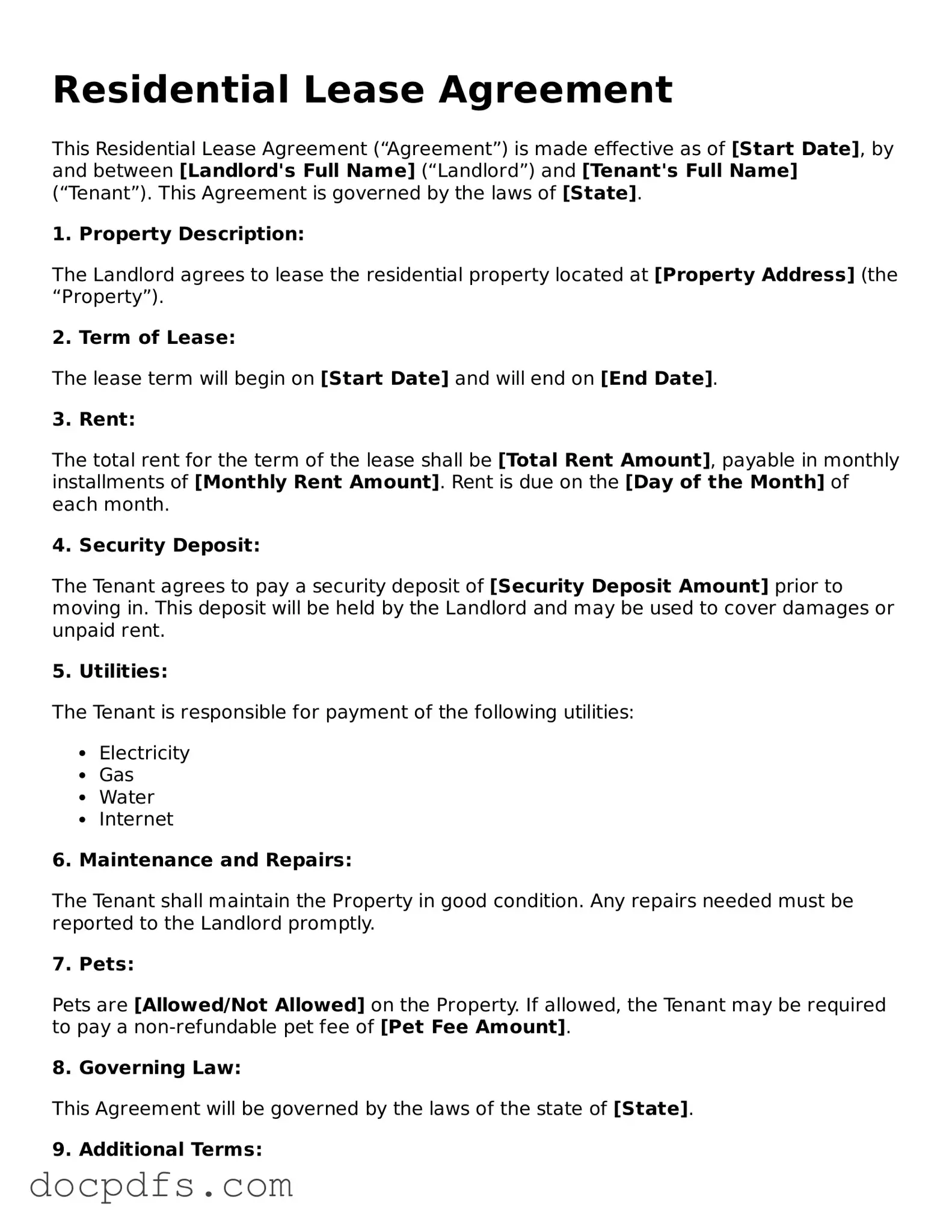What is a Lease Agreement?
A Lease Agreement is a legally binding document between a landlord and a tenant. It outlines the terms and conditions under which a tenant may occupy a property. This document typically includes details such as rental amount, duration of the lease, and responsibilities of both parties.
What are the key components of a Lease Agreement?
Key components of a Lease Agreement typically include:
-
Names of the parties involved (landlord and tenant)
-
Description of the rental property
-
Lease term (duration of the agreement)
-
Rent amount and payment details
-
Security deposit information
-
Maintenance and repair responsibilities
-
Rules regarding pets, smoking, and other restrictions
-
Termination conditions
How long is a typical Lease Agreement?
Lease Agreements can vary in length. Common durations include:
-
One year
-
Six months
-
Month-to-month
Shorter or longer terms may also be negotiated based on the needs of both parties.
What happens if a tenant wants to break the lease early?
If a tenant wishes to break the lease early, they may be subject to penalties as outlined in the Lease Agreement. These can include:
-
Forfeiture of the security deposit
-
Payment of rent until a new tenant is found
-
Additional fees as specified in the agreement
It is advisable for tenants to communicate with the landlord to discuss possible options.
Can a landlord increase the rent during the lease term?
Generally, a landlord cannot increase the rent during the lease term unless the Lease Agreement specifically allows for such increases. Rent increases are typically permissible only at the time of lease renewal or upon the expiration of the current lease.
What is a security deposit?
A security deposit is a sum of money paid by the tenant to the landlord before moving in. This deposit serves as protection for the landlord against potential damages or unpaid rent. The amount is usually specified in the Lease Agreement and must be returned to the tenant, minus any deductions for damages, at the end of the lease term.
What should a tenant do if there are maintenance issues?
If a tenant encounters maintenance issues, they should promptly notify the landlord or property manager. It is important to document the issue in writing and keep a record of all communications. The Lease Agreement typically outlines the process for reporting maintenance problems and the landlord's responsibilities for repairs.
Are there any restrictions on subletting the property?
Restrictions on subletting vary by Lease Agreement. Many agreements require the tenant to obtain written permission from the landlord before subletting. It is crucial for tenants to review the terms regarding subletting to avoid potential violations.
What is the process for terminating a Lease Agreement?
To terminate a Lease Agreement, tenants must follow the notice requirements specified in the document. This often involves providing written notice to the landlord a certain number of days in advance, typically 30 days. Failure to provide adequate notice may result in penalties or loss of the security deposit.
Can a Lease Agreement be renewed?
Yes, a Lease Agreement can often be renewed. The renewal process may involve negotiating new terms or extending the existing terms. Both parties should agree to any changes, and it is advisable to document the renewal in writing.
